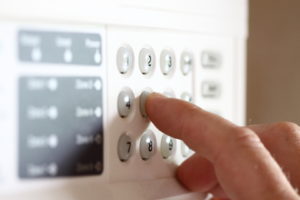How Motion Detectors Work
Ever wonder how a motion detector works? How can some inanimate object “know” you’re creeping nearby, even if you’re as quiet as a mouse? This amazing technology can be broken down into several types.
 Active Ultrasonic
Active Ultrasonic
- When an object moves, it can bounce back ultrasonic waves that are directed towards it. An active ultrasonic sensor does just this: sending out ultrasonic waves, that when converging upon the path of a moving object, will be reflected back. If enough reflection is measured, the alarm will sound.
- The downside is that dogs and cats can hear in this very high frequency range, and if the alarm is on all the time, it can be unpleasant for them.
Passive Ultrasonic
- This type is peeled for specific sounds, such as glass shattering.
- The downside is they cost a pretty penny.
- Another negative is that, due to their high sensitivity level, can send out false alarms.
Passive Infrared
- Your body emits heat. A dog’s or cat’s body emits heat. That’s because of the warm blood flowing through mammals. This heat is in the infrared range of the light spectrum, invisible to the human eye. The “PIR” type of sensor has a special kind of material that detects this heat emission. Upon detection, the sensor triggers electrical activity. And of course, this is converted to the sound of an alarm.
- Minimal energy is used by these inexpensive sensors, which have an indefinite lifespan.
- If an intruder knows where your PIR unit is placed, he might be able to foil it by walking in a straight line smack towards it, as this linear path will not reflect body heat in an easily detectable way.
- Another minus is that an animal can trigger it.
Tomographic
- Tomography is when radio waves are emitted. A moving object will upset them.
- This type of sensor can detect motion in the next room because it can penetrate walls.
- The downside is that they cost an arm and a leg.
Microwave
- Microwave pulses are sent out, and any moving object will reflect these.
- The downside is that the detection might be outside the specified range, setting off a false alarm.
- Another negative is that this type is a power guzzler. Because of this, it’s commonly set for on and off cycles. And what if a thief knows when these cycles are off?
Duo
- Two of the aforementioned types are combined. This helps reduce false alarms.
- Combining two types of sensors, though, can result in missing a real alarm.
Robert Siciliano personal and home security specialist to BestHomeSecurityCompanys.com discussing burglar proofing your home on Fox Boston. Disclosures.


























